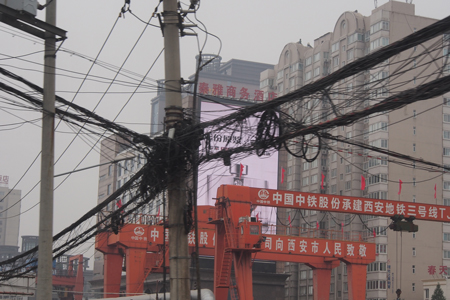
More crazy wiring |
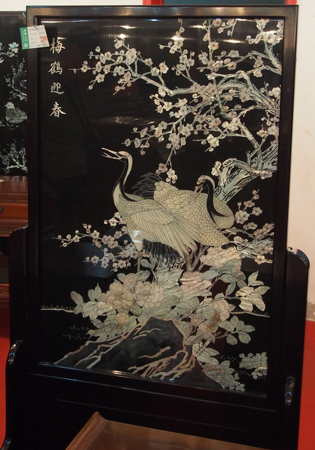
Lacquer panel
|
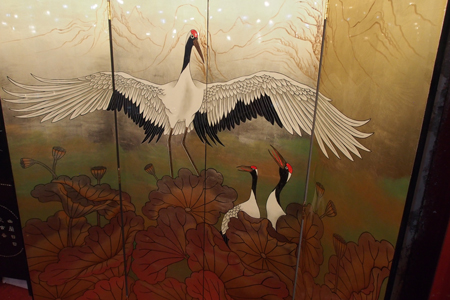
Lacquer panel |
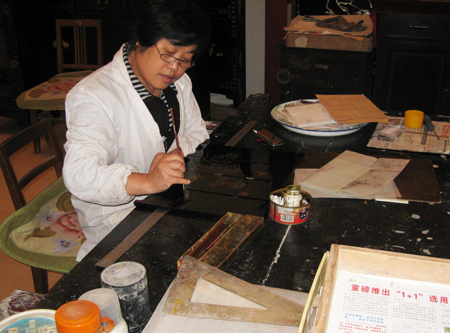
Applying the lacquer
|
Next we went to the Small Wild Goose Pagoda. It was a Buddhist temple built in 707 CE (Tang Dynasty). The Buddha statues were taken and all of the monks left during Mao’s Cultural Revolution. We looked at the head monk’s bed. It was made of bricks with a hollow underneath where heat could be blown in during winter (nice touch). His pillow was either a jade or porcelain block. (The beds in our hotels have not been much softer!) This room is now a museum.
|
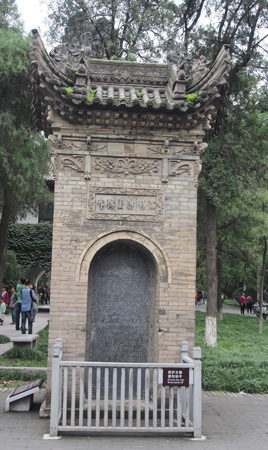
Entrance to the Small Wild Goose Pagoda area
|
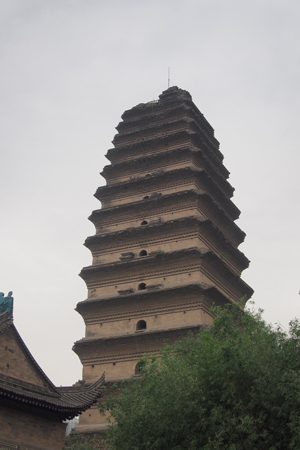
Small Wild Goose Pagoda
|
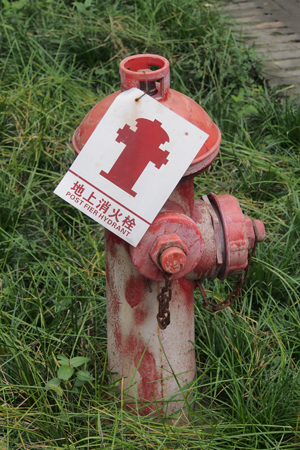
Another intriguing sign |
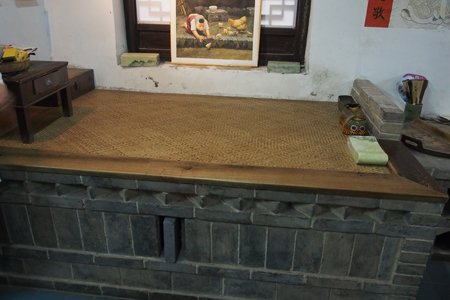
Head monk's bed and pillow
|
A man inside drew our names in Chinese characters on silk (or rice) paper.
|
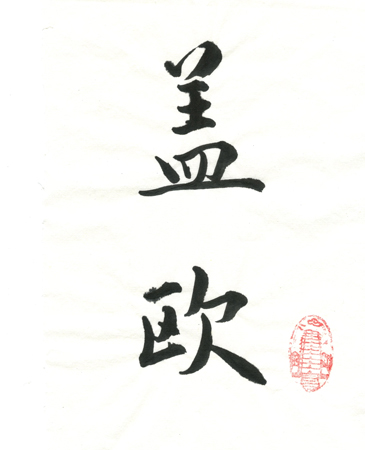
Gale
|
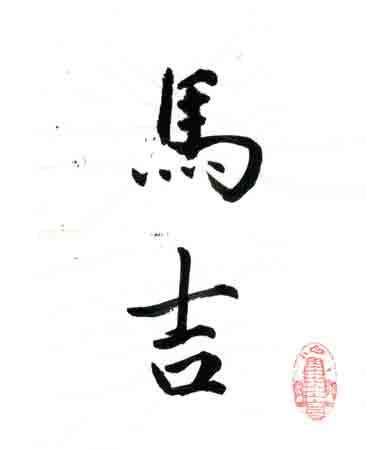
Marge |
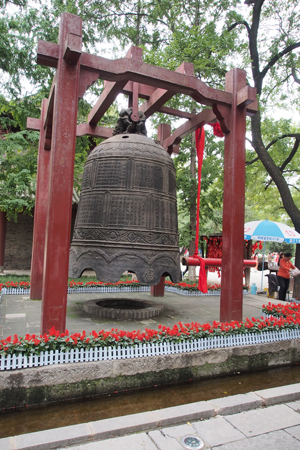
Bell |
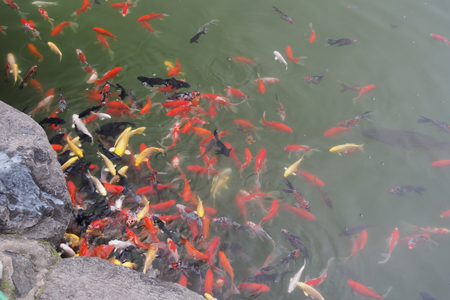
Koi pond |
Today is Mary’s 65th birthday. We had a cake with a Chinese birthday candle. The top opens up when the candles are lit - fun!
On the way to our village in Huxian County for our over-night stay in a farmer’s house, we stopped at a street market to buy some fruit because our farmers’ families don’t eat or serve fruit. We bought some bananas and mandarin oranges to eat after dinner and at breakfast.
|
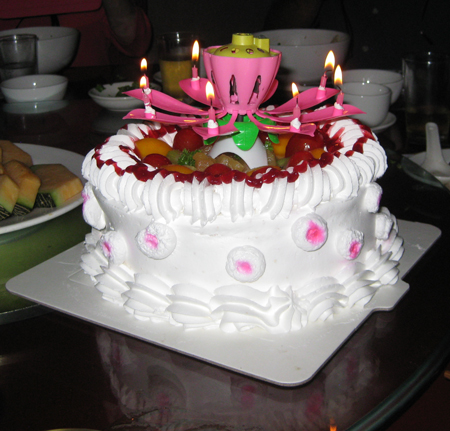
"Exploding" birthday cake |
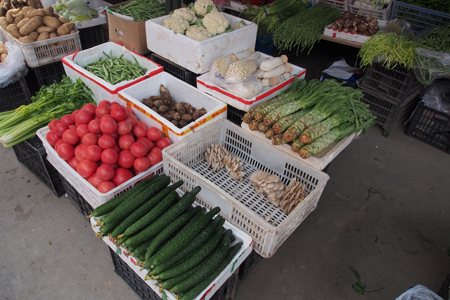
Market |
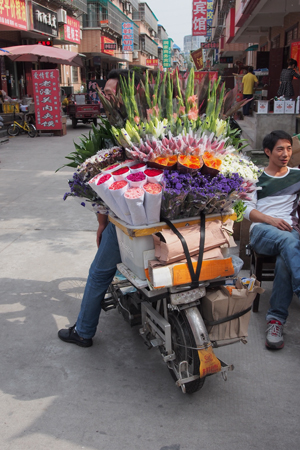
Flower vendor
|
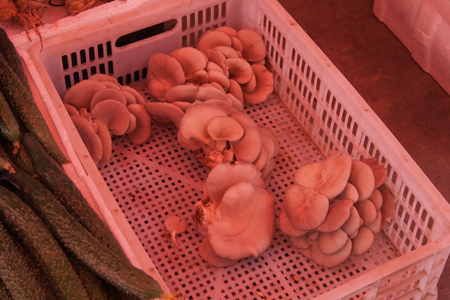
Mushrooms |
We arrived at our farm village and met our hostesses. Marge, Donna, and I were assigned to “Juan.” She is 59-years-old, retired, and speaks absolutely no English. To say we had a difficult time conversing is an understatement. Our lady showed us a photo of her family – two married sons each with a son.
This village was built beginning in 1992 as the farmers moved out of their decrepit adobe buildings in the old housing area and into new two-story “modern” houses.
|
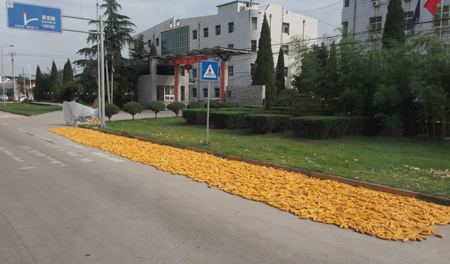
Drying corn in the street |
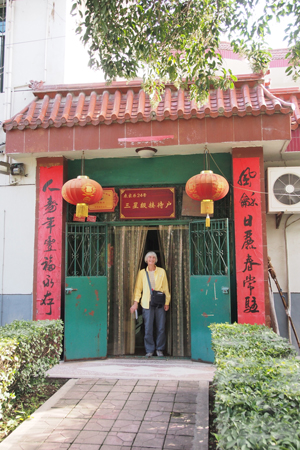
Gale at the door of our hostess' house
|
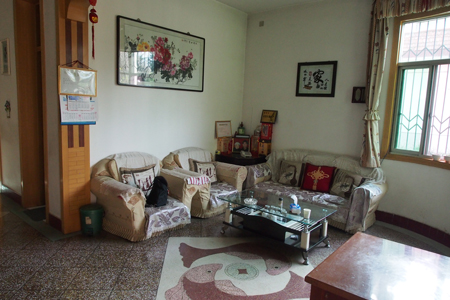
Living room |
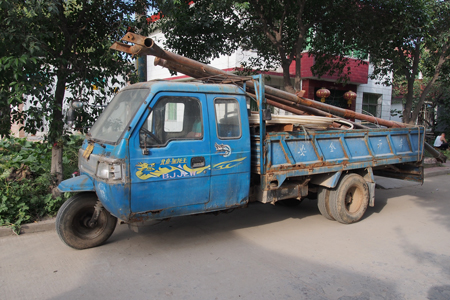
Three-wheel truck
|
We walked west into the old village on the mud roads. Some people still live there in buildings that are falling down and have no sewer or running water. It was very sad to see.
Each farmer and person in his house is allotted 3500 square meters of farmland and they grow corn and winter wheat. Some farmers are trying to grow grapes or watermelon. The style of farming is called “farmer’s responsibility” and is subsidized by the government in a complicated system. This village does have some large machinery to plant and harvest but it is such a meager existence that most men, and even the women, usually have a second job in a factory.
|
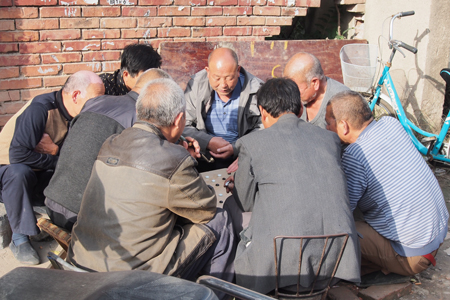
Old men playing a game
|

"Old" village |
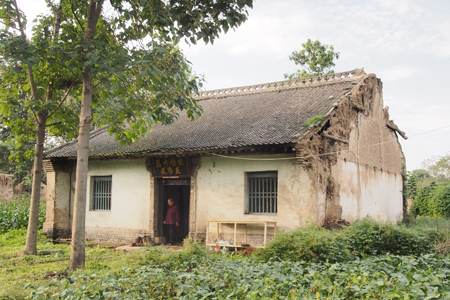
Old Buddhist temple
|
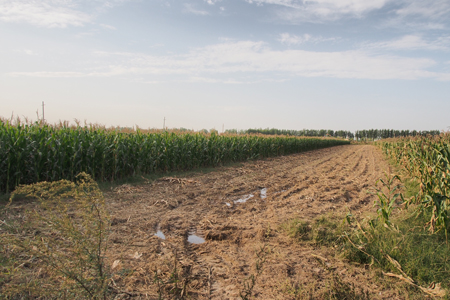
Corn fields |
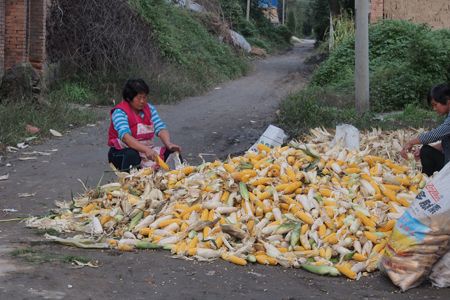
Husking corn by hand
|
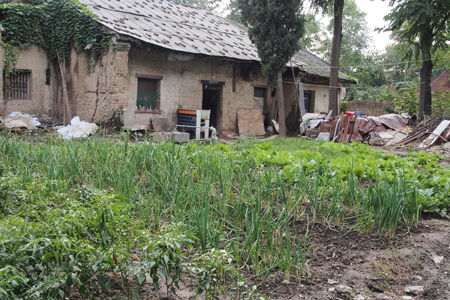
Nice vegetable garden |
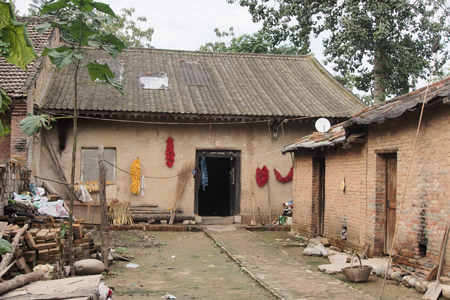
|
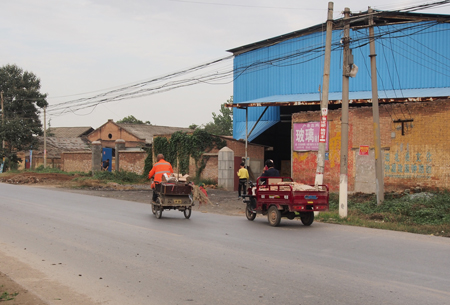
Local transportation
|
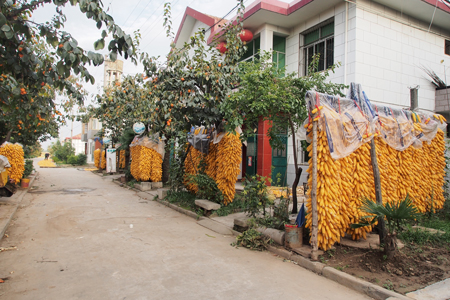
More corn hung up to dry
|
After seeing the old village, we walked back to our host house for dinner. We were supposed to help cook by making noodles, kneading and rolling the pancakes, etc., but our hostess really didn’t want help and at one point the three of us were “invited” to go watch TV (all in Chinese, of course). When dinner finally happened it was very good. We then had to go to the village square to dance with the village women.
|

Noodles drying |
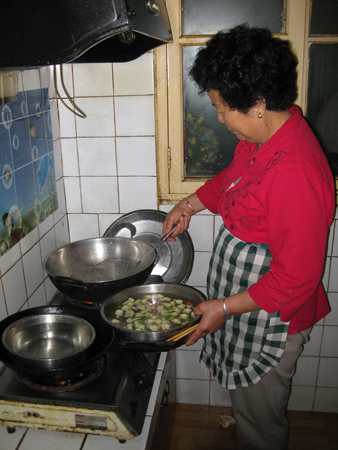
Juan fixing dinner
|

Veggies for dinner |
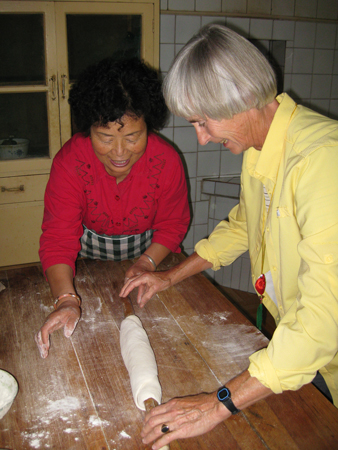
Gale making noodles, Juan supervising
|

Gale making noodles
|
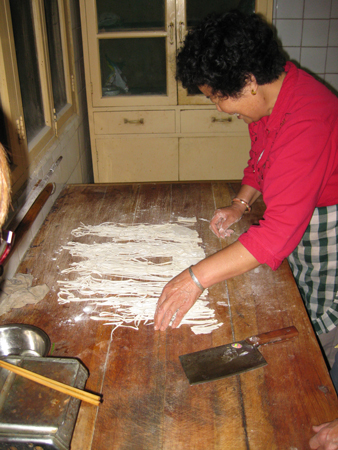
Juan finishing the project |
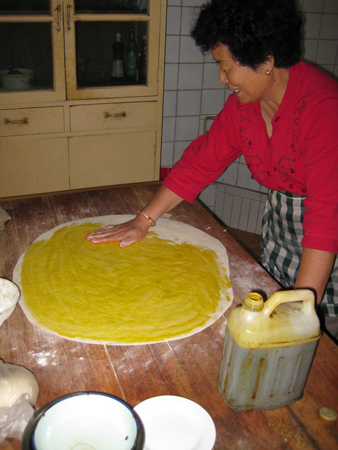
Don't know what it is called but it was good
|
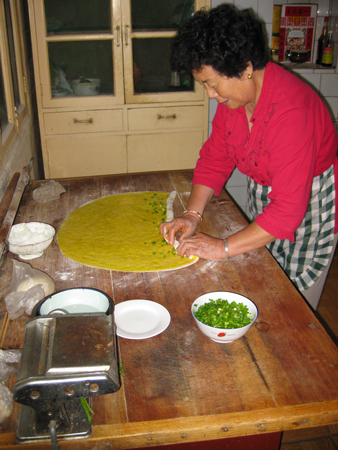
|
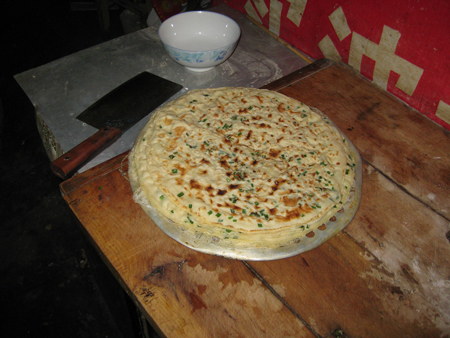
Finished dish |
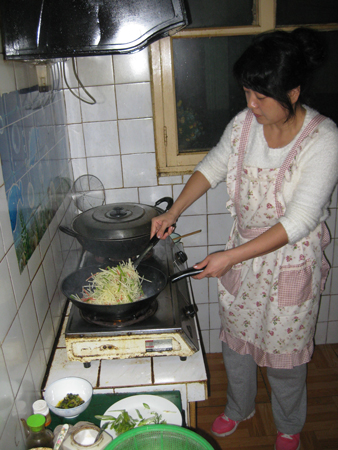
Daughter-in-law helping out with the cooking
|
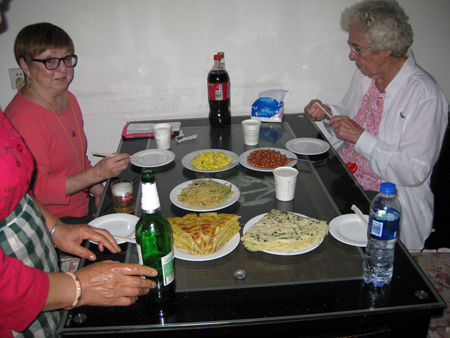
On the table!
|
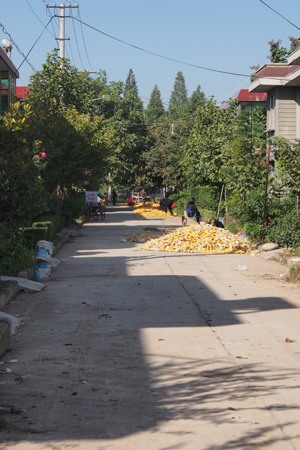
|
Tues, 10/5 - Donghan Village to Chengdu
Breakfast was also painful. We each had a boiled egg (a good start), fried bread of a sort, a tortilla thing with some kind of filling and a rice porridge called Congee that we had to drink from a bowl. The plates of celery and cucumbers were too much food. We enjoyed our bananas.
At 8:30 we walked to visit a Farmer's Painting Studio in the village. A farmer-artist demonstrated his skills at free-hand painting. Most of the paintings are farm scenes in bright colors, like harvesting persimmons or herding sheep. Several were very attractive.
|
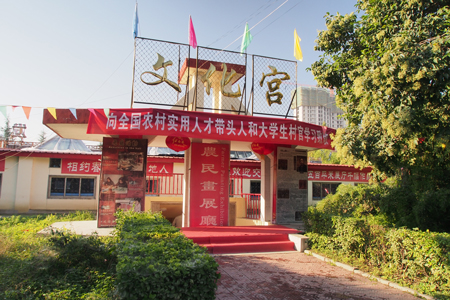
Farmer's Painting Studio |
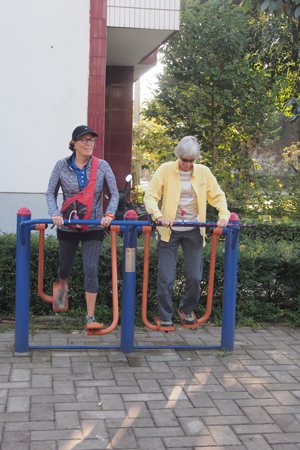
Mary and Gale on the exercise equipment which is found in many towns
|

Farmer-artist
|
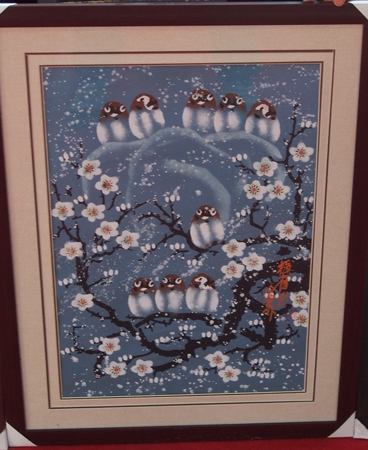
One of his paintings |
We had a nice buffet lunch at the Xi’an Airport and flew to Chengdu. The plane was delayed an hour so it was late getting into Chengdu. So much for another of OAT’s “afternoon at leisure!”












































